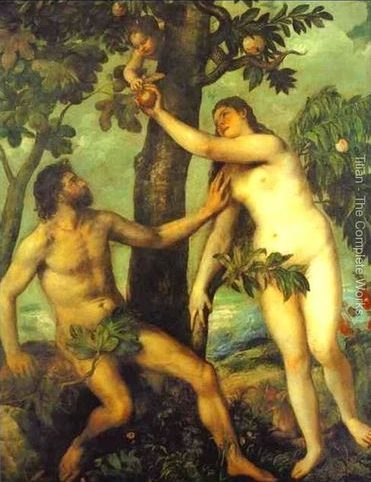Environment
The environment is something that has always inspired artists and creators throughout time. From the very first examples of art that we have found, art emulates the surrounding environment of the artist. Cave paintings are an obvious reference to this, the earliest cave paintings found are the outlines of hands or drawings of different animals around the artists, for example this link shows the earliest known artwork found in Indonesia. Moving closer to more contemporary artists we begin to look at prominent figures like Tiziano Vecellio (Titian). Even though he mostly did not paint real life things aside from portraits he did paint lots of religious scenes, taking parts of the bible and painting them into life was for him a way to express his environment. In 16th century europe religion was one of the most prominent forces in the continent, it affected all aspects of people’s lives, they went to church often and would spend time praying. Because of this their religion was their environment, everything that they did was caused by Christianity.
His paintings often show a very positive, christian message. He romanticized the scenes to show his faith through his artwork, the opening of the heavens in David and Goliath show the positive message that is being shown, the defeat of evil and bad is praised by the Lord. He is showing his psychological environment as opposed to the people who produced the cave paintings mentioned at the top of this blog post, they are showing simply the physical environment, their immediate surroundings like their hands and arms and the external like the babirusa (pig-deer) drawing that is present next to the hand prints.
This difference between the physical and the mental environments is an area of art and photography that is also worth exploring. Although the physical environment of two people can be the same, they can be in the same environment, their mental environments can be incredibly different. It is easy to stimulate the same external environment in multiple people, what it is difficult to do is then to get them to think the exact same thoughts of this identical scene. Although mental conditioning of people is something that can be achieved it is impossible to get someone to think exactly the same. The human brain is something that can be easily controlled and manipulated to a degree but there is always the ability for the mind to wander off and do its own thing, despite being forced into this small space. Scott Berkun talks about this theory by saying that the “mind is unique in the world for its infinity of ideas, for it can be used to think about almost anything in a million different ways.”[1] Because of this the different interpretations of the same thing can always lead to different end results. In psychology there is a debate over free will Vs determinism, this is a debate over if people are completely free to make their own decisions or if everything that has happened to them in their past or genetic factors has caused them to make these choices. As with most of the debates in psychology it is neither all-or-nothing, in reality some decisions are made based on predetermined factors and some are aided by the free will of the individual. Personally I lean towards the determinism side of the debate more, I believe that although people all think differently it is due to individual experiences. Nevertheless it is still interesting to see the results of different experiences and how they can create unique people and how these unique people can create unique art.
To help me get a better understanding of the concept of “environment” I made a mind map of things that I would just come up with as we were familiarising ourselves with the task.

Although my handwriting can be difficult to read and understand sometimes hopefully this can be read. This was only the most basic mind map, based on this as a class we made several mind maps to allow different people in the class to give their input.
There were lots of different ideas that came out of the discussion sessions, one of the most prevalent was to look at landscapes in some way, to photograph the landscape of a person or group to show their environment that way. This could work very well for some projects, being able to map an environment and get an understanding for what it is really like would help the understanding of the subject greatly. The human (and animal) mind is shaped by our environment, among other things, and so there is always a link between an animal or plant and their environment. This often the physical adaptations that they have to survive, investigating these differences between different species and looking at how they fit to the environment could be a really interesting thing to explore.
One other point that kept coming up was “people”, this is an interesting thing to try and look at, again the photographer could be looking at their own environment based on the people around them. You could look at family or relationships, and how they create a social environment for people, by looking at different families and observing their differences you can get an idea for how families other than your own react to different situations in possibly unexpected ways. In the same vein, by looking at different homes an understanding of the intimate environment in which someone lives can be very interesting, seeing inside this place where they can be themselves. In a bedroom where they do not have any pressure to conform the social norms that they usually will. Inside these spaces they can truly be themselves and even though a photographer will not see this side entirely they will get a glimpse of who this person truly is.
Bibliography






